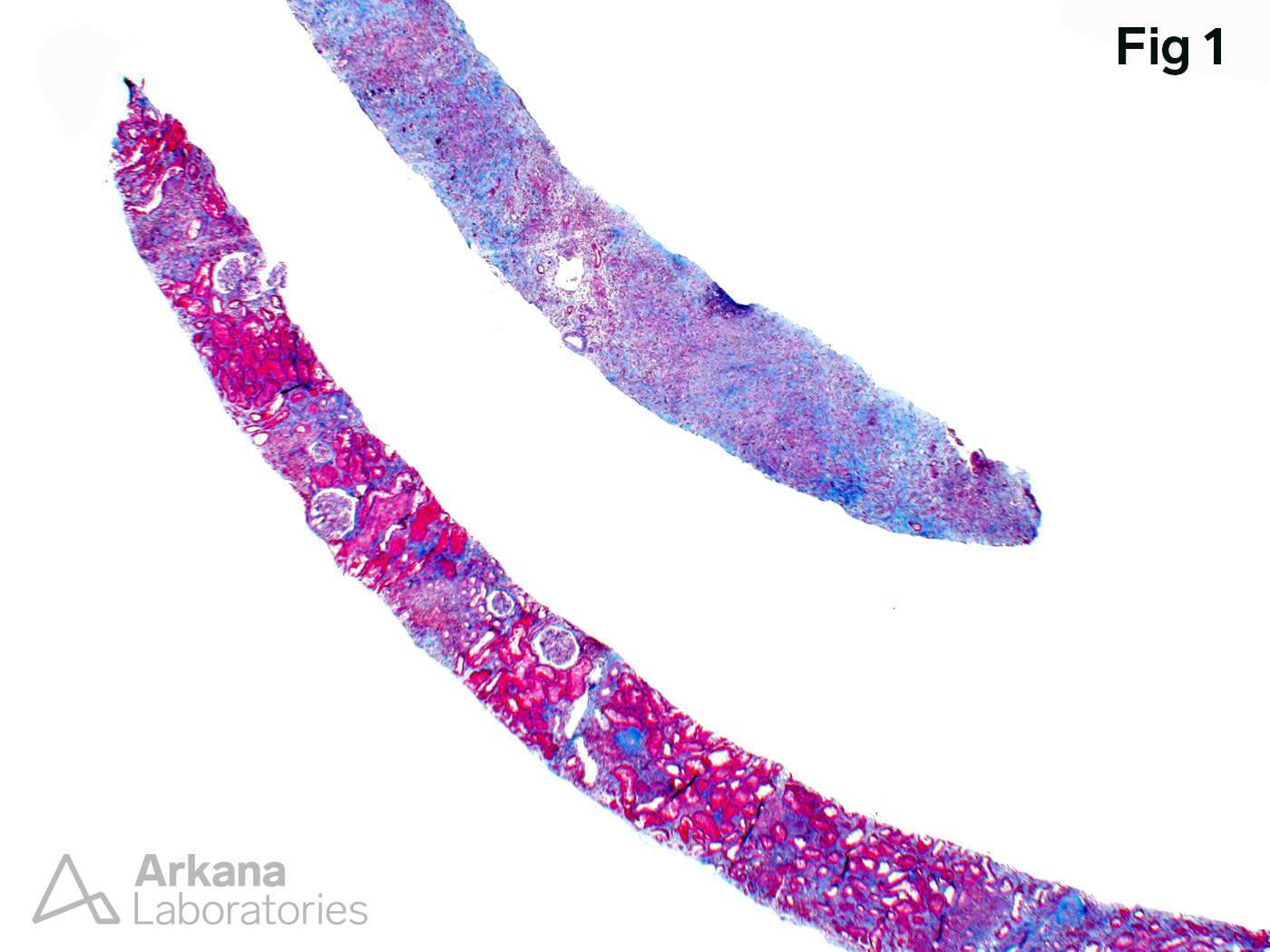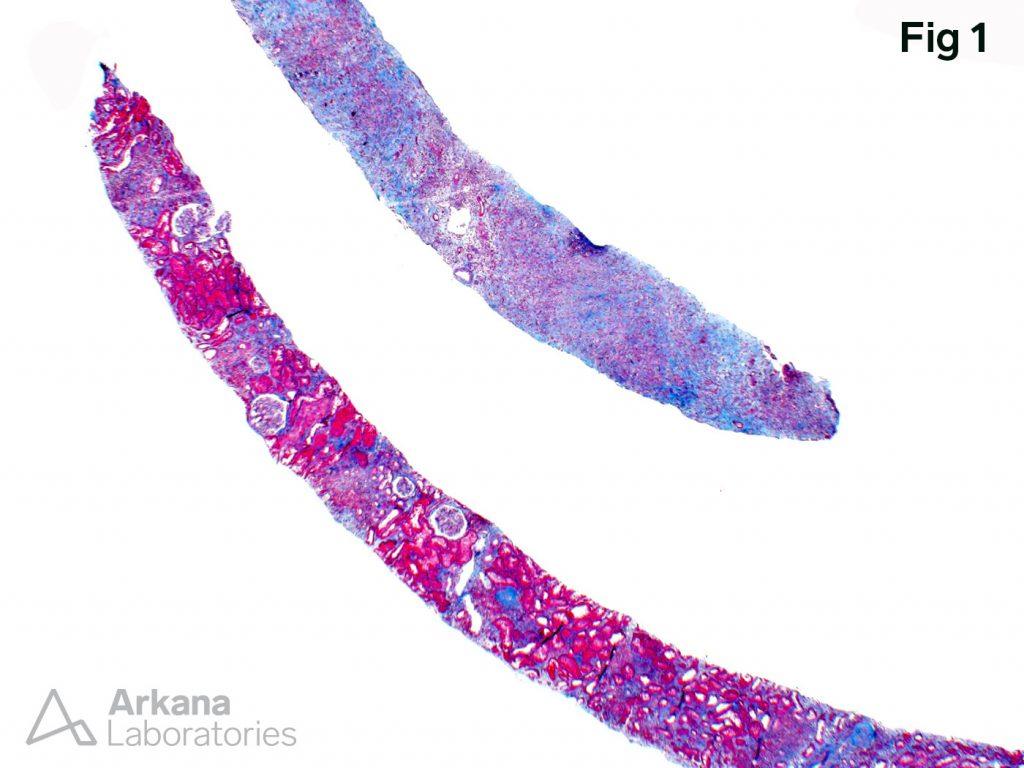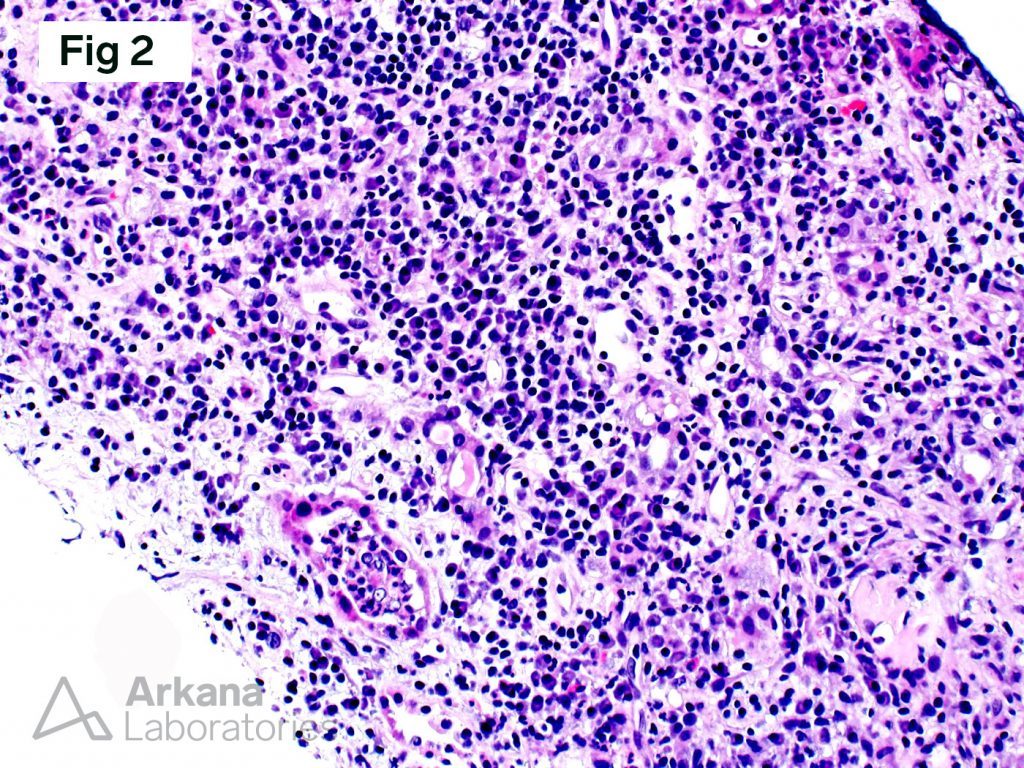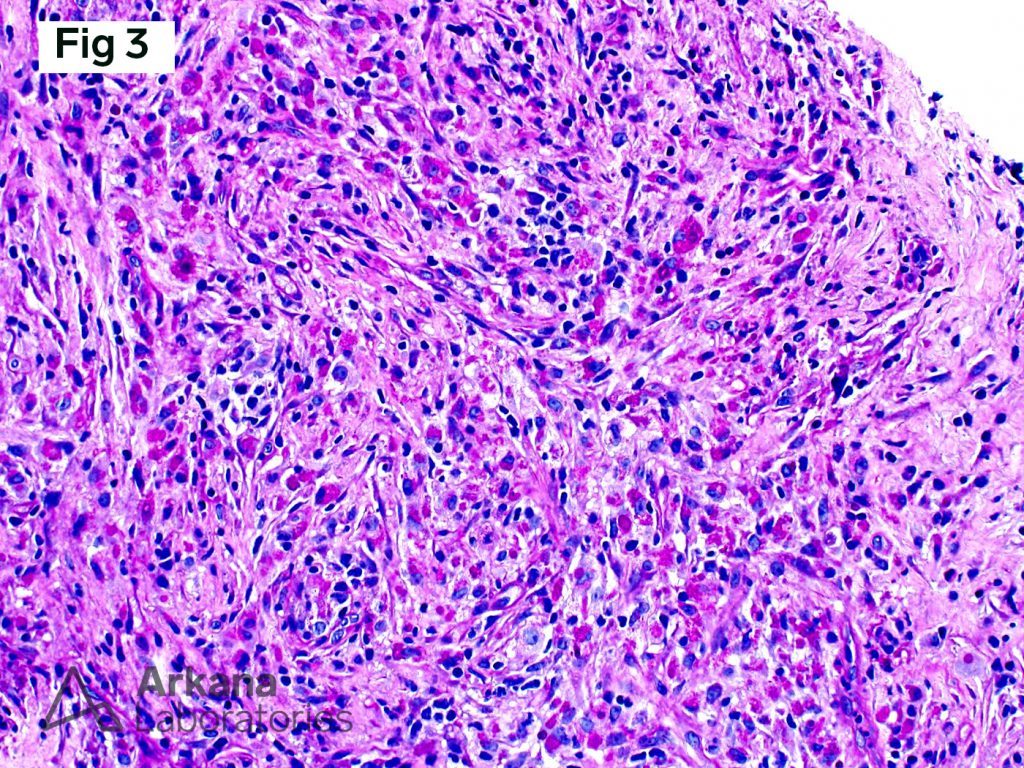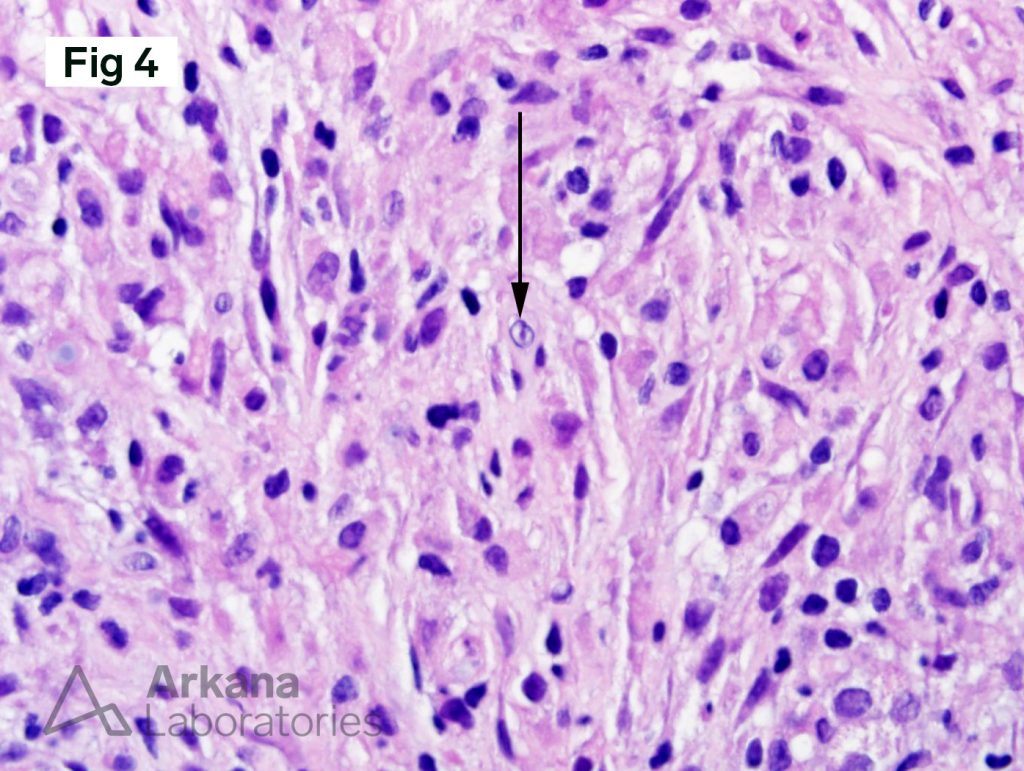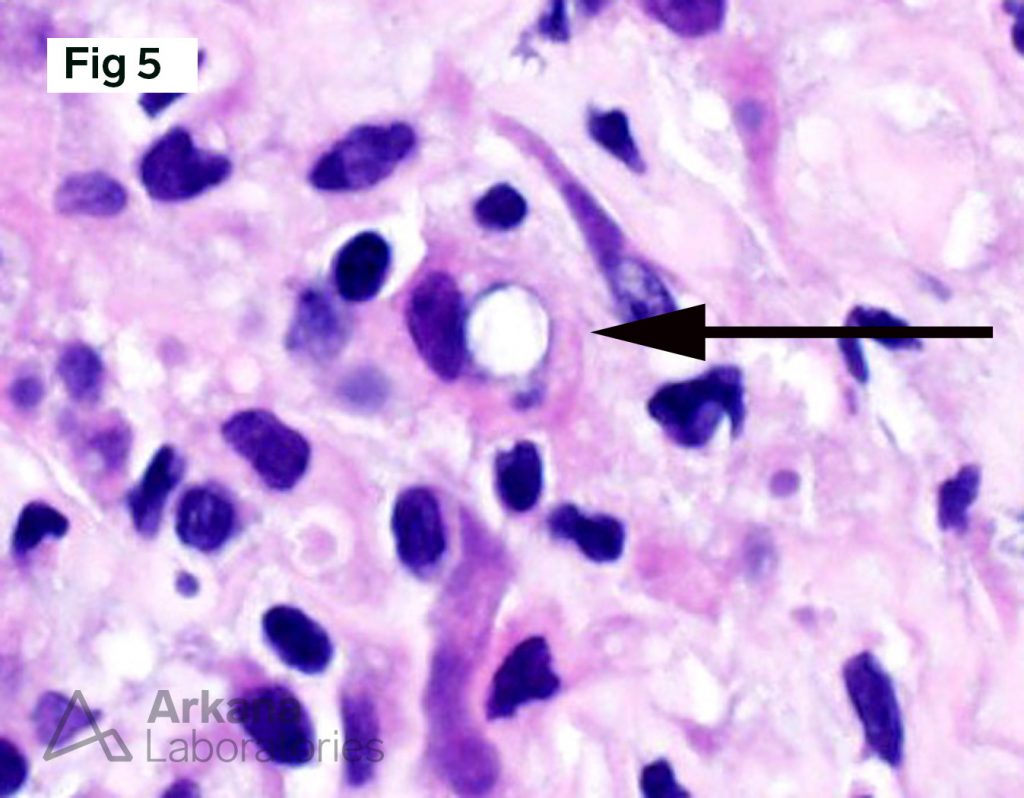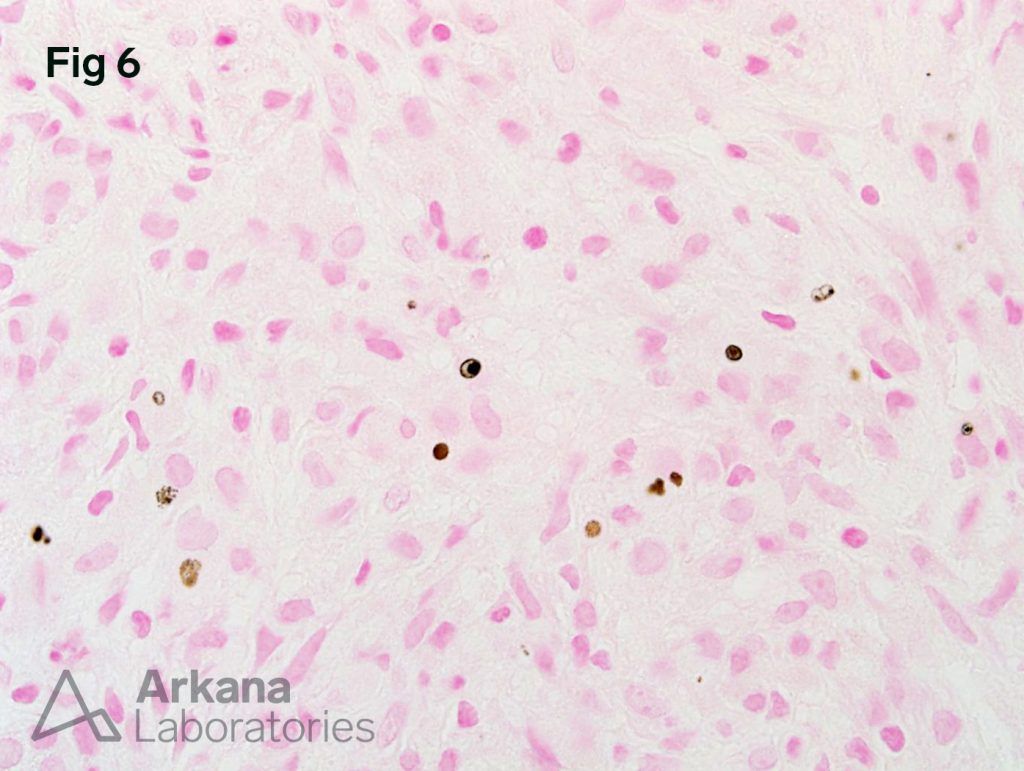Learn about Malakoplakia
An adult patient in the mid-fifties with a deceased donor renal transplant for three years (primary disease “hypertensive nephrosclerosis”) presented with a low-grade fever and a rising creatinine. Urinalysis showed hematuria and proteinuria. A transplant biopsy was performed.
1. Low power showing one relatively intact core and a second core showing diffuse replacement of the usual renal parenchyma by inflammation and fibrosis (Trichrome, 40x)
2. Mixed inflammatory cell infiltrate (Jones Silver, 400x)
3. Macrophages with PAS-positive granules (PAS, 400x)
4. Michaelis-Gutmann body (H&E, 400x
5. Michaelis-Gutmann body (H&E, original magnification 600x)
6. Von Kossa Positive Michaelis-Gutmann bodies (von Kossa, 400x)
Diagnosis: Malakoplakia
• First described by Michaelis and Gutmann in 1902 and later named by Von Hansseman
• Malakoplakia comes from Greek words malakos (soft) and plakos (plaque)
• Chronic bacterial infections associated with numerous macrophages with PAS-positive granular cytoplasm and intracellular deposition of iron and calcium (called Michaelis-Gutmann bodies)
• Calcium in the granules is identified with a von Kossa stain
• Iron can be shown with a Prussian blue stain
Epidemiology
Immunocompromised patients (HIV, renal transplant recipients) are predisposed to malakoplakia
Etiology
• Caused by defects in phagocytic or degradative functions of histiocytes in response to gram-negative coliforms (most commonly E. coli or Proteus)
• Lysosomal degradation of bacteria is decreased
• Failure of cells to release lysosomal enzymes
Clinical features of malakoplakia
• Patients usually present with urinary symptoms and urinary tract infection
References:
1. Malakoplakia after kidney transplantation: Case report and literature review. Nieto-Ríos JF, Ramírez I, Zuluaga-Quintero M, Serna-Higuita LM, Gaviria-Gil F, Velez-Hoyos A. Transpl Infect Dis. 2017 May 31. doi: 10.1111/tid.12731.
2. Renal malakoplakia mimicking a malignant renal carcinoma: a patient case with literature review. Purnell SD, Davis B, Burch-Smith R, Coleman P. BMJ Case Rep. 2015 Jul 15;2015. pii: bcr2014208652. doi: 10.1136/bcr-2014-208652. PMID: 26177998
3. Mass lesions in the transplanted kidney: Questions. Pirojsakul K, Powell J, Sengupta A, Desai D, Seikaly M. Pediatr Nephrol. 2015 Jul;30(7):1107-8, 1109-11. doi: 10.1007/s00467-014-2786-7. PMID 24718697
4. Successful treatment of renal allograft and bladder malakoplakia with minimization of immunosuppression and prolonged antibiotic therapy. Graves AL, Texler M, Manning L, Kulkarni H. Nephrology (Carlton). 2014 Apr;19 Suppl 1:18-21. doi: 10.1111/nep.12194. PMID 24460630
5. Malakoplakia of the kidney. Kobayashi A1, Utsunomiya Y, Kono M, Ito Y, Yamamoto I, Osaka N, Hasegawa T, Hoshina S, Yamaguchi Y, Kawaguchi Y, Hosoya T. Am J Kidney Dis. 2008 Feb;51(2):326-30. doi: 10.1053/j.ajkd.2007.08.029 PMID: 18215711
Quick note: This post is to be used for informational purposes only and does not constitute medical or health advice. Each person should consult their own doctor with respect to matters referenced. Arkana Laboratories assumes no liability for actions taken in reliance upon the information contained herein.
